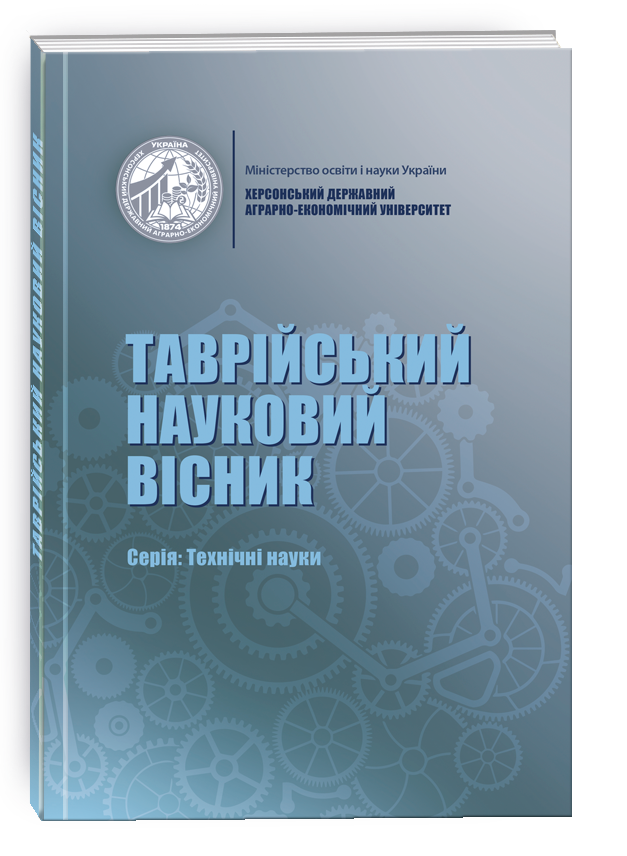IMPROVEMENT OF THE TECHNOLOGICAL PROCESS OF WHEAT GRAIN GRINDING INTO FLOUR
DOI:
https://doi.org/10.32782/tnv-tech.2023.2.21Keywords:
flour, grinding, middlings, dunst, entoleter-dismembrator, rolling machineAbstract
In accordance with the adopted structure of graded wheat grinding, the first three grinding systems grind products of the first quality. On these systems, the largest amount of high-grade flour is formed. Therefore, the study of grinding modes of these systems is of great importance for obtaining the largest yield of high-grade flour. The aim of the work is research on improving the technological process of grinding wheat grain into flour to reduce energy consumption in the process of its production. The research carried out in production conditions established that the roll spacing of the mill is reduced when grinding the grain products from the 1st grinding system to the 2nd grinding system, the yield of middlings and dusts decreases, and the yield of the 1st grade flour increases by an insignificant amount. The rolling machine of the 2nd grinding system can give a maximum flour yield of up to 35 %. At the same time, additional grinding of intermediate stock in entoleter-dismembrator allows to increase the total yield of high-grade flour to 60 %, which is 25 % more than when using only one rolling machine. Research has established that the dependence of the flour yield in ESM-1.5 entoleter-dismembrator complies with a linear law depending on the yield of high-grade flour in the rolling machine of the 2nd grinding system. With an increase in the yield of high-grade flour in a rolling machine from 5.3 % to 31.0 %, the yield of flour after ESM-1.5 entoleter-dismembrator increases from 23.1 % to 30.6 %, respectively. The correlation coefficient of the experimental data is 0.92, which indicates a close connection of the studied features. Therefore, the highest yield of flour on the 2nd grinding system is achieved in grinding modes on a rolling machine – 35 %. At the same time, the use of ESM-1.5 entoleter-dismembrator allows to increase the total flour yield on the 2nd grinding system up to 62 %.
References
Любич В. В., Желєзна В. В., Єремеєва О. А., Новак Л. Л. Вплив режимів помелу збагачених круподунстових продуктів на вихід борошна під час сортового помелу пшениці. Вчені записки Таврійського національного університету імені В.І. Вернадського. 2020. № 3. С. 150–158.
Господаренко Г. М., Любич В. В., Полянецька І. О., Возіян В. В. Хлібопекарські властивості зерна спельти залежно від удобрення. Вісник Уманського НУС. 2015. № 1. С. 11–16.
Vereshchinsky A. P. Grain preparation by hulling in mills of high-quality grinding of wheat. Storage and processing of grain. 2009. Vol. 11. Р. 34–35.
Mateos-Salvador F., Sadhukhan J., Campbell G. M. Extending the normalised Kumaraswamy breakage function for roller milling of wheat flour stock to second break. Powder Technology. 2013. Vol. 237. Р. 107–116.
Fistes A., Tanovic G., Mastilovic J. Using the eight-roller mill on the front passages of the reduction system. Journal of Food Engineering. 2008. Vol. 85. Р. 296–302.
Mateos-Salvador F., Sadhukhan J., Campbell G. M. The normalised Kumaraswamy breakage function: A simple model for wheat roller milling. Powder Technology. 2011. Vol. 208. Р. 144–157.
Fistes A., Rakic D., Takaci A., Brdar M. Using the breakage matrix approach to define the optimal particle size distribution of the input material in a milling operation. Chemical Engineering Science. 2013. Vol. 102. Р. 346–353.
Fistes A., Rakic D., Takaci A., Brda M. Solution of the breakage matrix reverse problem. Powder Technology. 2014. Vol. 268. Р. 412–419.
Господаренко Г. М., Любич В. В., Новіков В. В., Полянецька І. О., Возіян В. В. Вплив типу зерна пшениці на техніко-економічні показники круп’яного виробництва та кулінарну оцінку готового продукту. Вісник Уманського НУС. 2017. № 1. С. 38–44.
Mabille J., Abecassis F. Parametric modelling of wheat grain morphology: a new perspective. Jornal of Cereal Scence. 2003. Vol. 37. Р. 43–53.
Любич В. В. Хлібопекарські властивості зерна сортів пшениці озимої залежно від видів, норм і строків застосування азотних добрив. Вісник Дніпропетровського ДАЕУ. 2017. № 2. С. 35–41.
Любич В. В., Желєзна В. В., Стратуца Я. С. Перспективи використання тритикале в хлібопекарській промисловості. Таврійський науковий вісник. 2022. Вип. 3. С. 133–143.
Господаренко Г. М., Любич В. В., Желєзна В. В., Новіков В. В. Оптимізація технології хліба з використанням борошна гарбузового. Вісник Уманського НУС. 2022. № 1. С. 81–87.
Любич В. В., Желєзна В. В., Новіков В. В. Формування кулінарної якості хліба з борошном гарбузовим різних сортів. Науковий вісник Полтавського університету економіки і торгівлі. 2022. Вип. 2. С. 5–10.







